Tips to Beautify My Garden with Planters: Creative Ideas for a Stunning Yard
Transforming your garden into a beautiful oasis with planters can be both fun and rewarding. Using planters allows you to add a touch of color and creativity to your outdoor space while also making it easier to manage and arrange your plants. From vibrant flowers to fresh herbs, planters offer endless possibilities to enhance your garden’s aesthetic appeal.
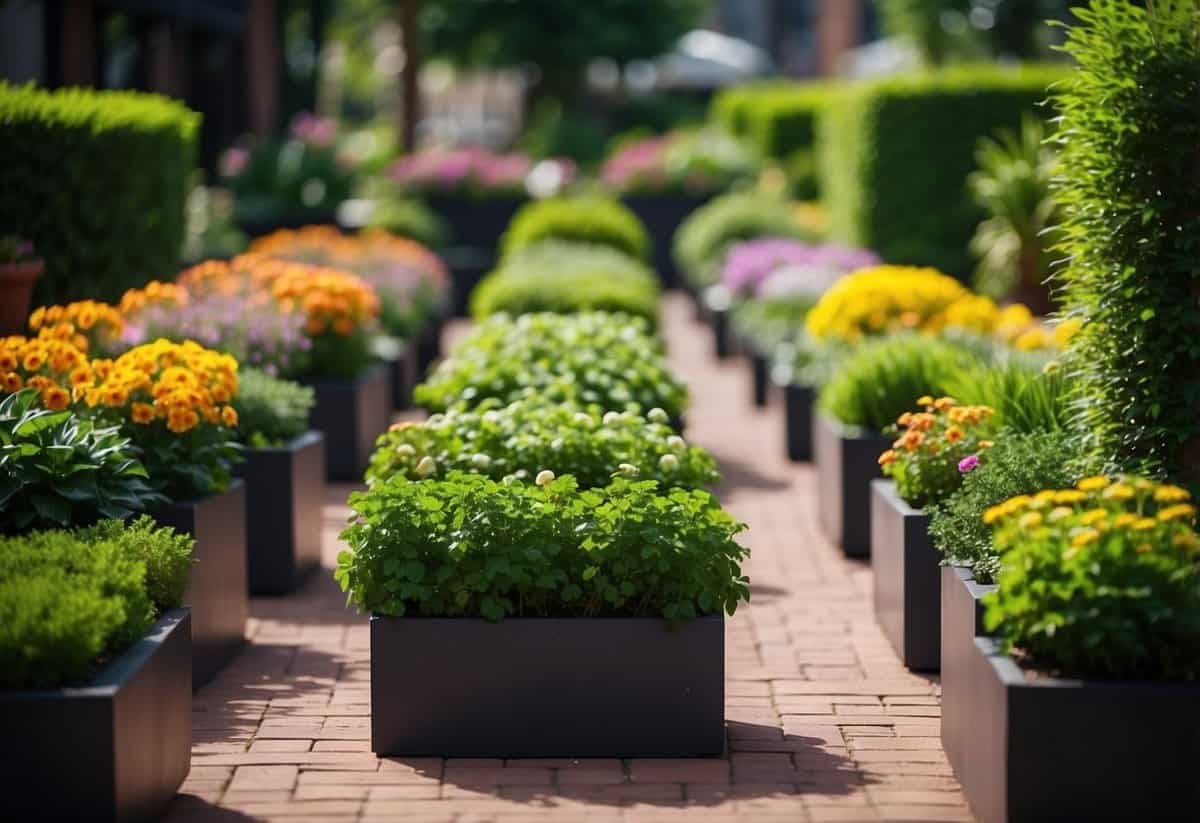
Choosing the right planters can significantly boost the overall look and feel of your garden. Whether you’re working with a spacious backyard or a small balcony, planters can help you create a lush, green environment that thrives in any setting. By exploring creative ideas and tips, you can make the most out of your garden space.
1) Colorful Ceramic Planters

Brighten up your garden with colorful ceramic planters. These vibrant pots can add a playful touch and instantly cheer up any space. You can find a stunning selection of ceramic planters at The Mommies Reviews.
Consider using hanging ceramic planters to maximize your vertical space. Hanging planters are perfect for creating a lush, green wall. Plus, they’re a great way to bring color to areas with limited floor space.
2) Repurposed Vintage Containers
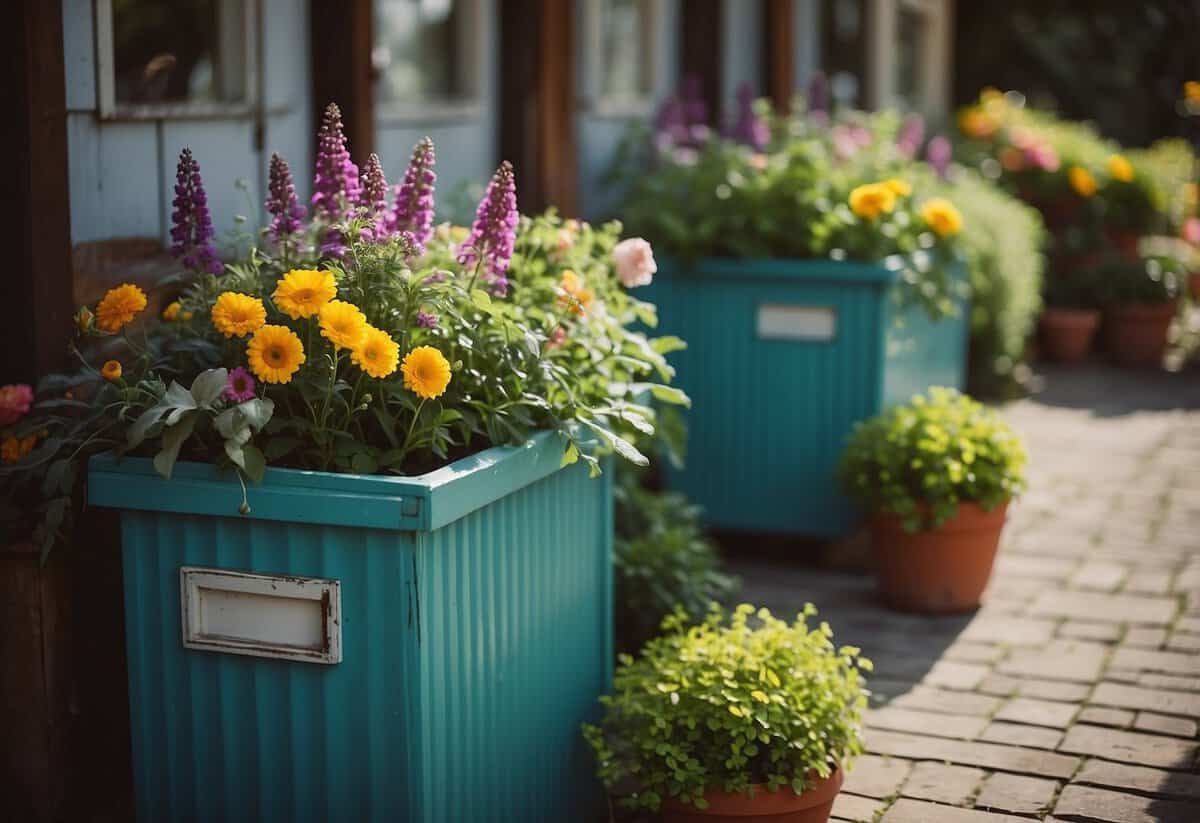
Using repurposed vintage containers in your garden adds a unique charm.
An old birdcage can become a lovely planter. It adds architectural interest and gives your garden a vintage feel. The plants can grow through the sides, creating a delightful look. Find more ideas for birdcage planters.
Vintage toolboxes make excellent succulent planters. They are both stylish and practical. Vintage colors and designs can highlight your garden’s beauty. See how to transform a toolbox here.
Colanders can be turned into hanging planters with a touch of creativity. Line them with moss for a natural look. This repurposing method is both functional and visually appealing. Explore more colander container ideas.
3) Hanging Macrame Plant Holders

Add charm to your garden with hanging macrame plant holders. They are easy to make and look stunning. You only need a few materials like cords, scissors, and a pot.
For beginners, simple patterns are best. Try using cotton or jute for a rustic feel. You can find easy macrame patterns online to get started.
Use strong cords for durability. Hang your creations on hooks or branches, and enjoy how they enhance your garden’s beauty.
4) Elegant Terracotta Pots

Terracotta pots can add a classic touch to your garden. Their natural color blends well with all types of plants and flowers.
You can use them as planters for small trees or arrange several in a cluster for a decorative effect. Decorating terracotta pots with a little paint can make them even more charming.
Explore ideas like creating strawberry-themed pots to add vibrant colors. Simple and beautiful, terracotta pots are both versatile and timeless.
Consider stacking them or using them as candle holders for evening gatherings. They truly bring elegance to any garden setting.
5) Charming Wooden Crates

Wooden crates can add a rustic charm to your garden. They are versatile and can be used as planters, shelves, or even decorative pieces.
To turn a crate into a planter, line it with plastic or landscape fabric to keep the soil in place.
You can also hang crates on a wall or fence to create a vertical garden.
Old crates can be easily transformed into beautiful planters by adding rope handles and hanging them.
Don’t forget to seal the wood to protect it from the elements. This can help your planters last longer and keep your garden looking great.
6) DIY Painted Tin Cans
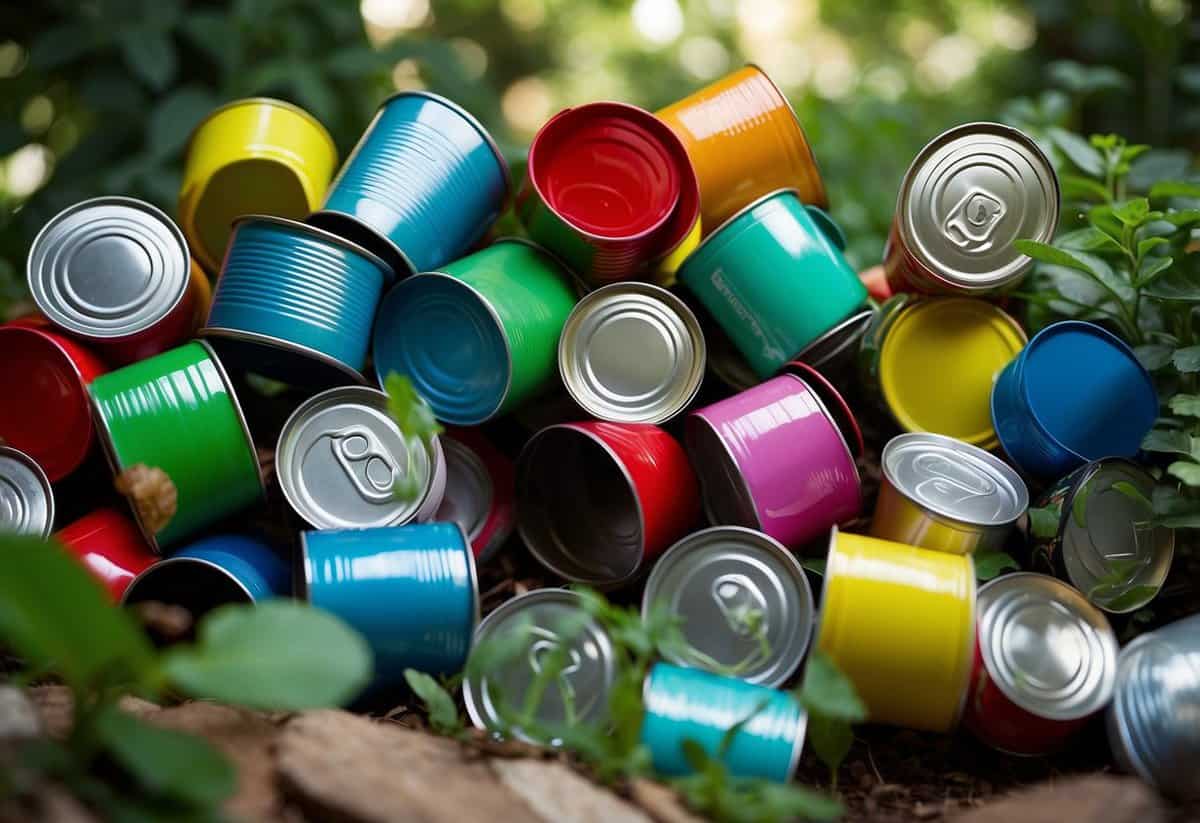
You can easily turn empty tin cans into beautiful planters with some paint. Start by gathering different types of paint, like spray paint or chalk paint. Choose bright colors to make your planters pop.
After cleaning the cans, spray them with a base color, such as gold. You can add patterns using painters tape, like stripes or polka dots. This will make each planter unique and eye-catching.
Don’t forget to punch holes at the bottom of the cans for drainage. This is important to keep your plants healthy. Your garden will look wonderful with these colorful tin can planters!
7) Rustic Iron Plant Stands
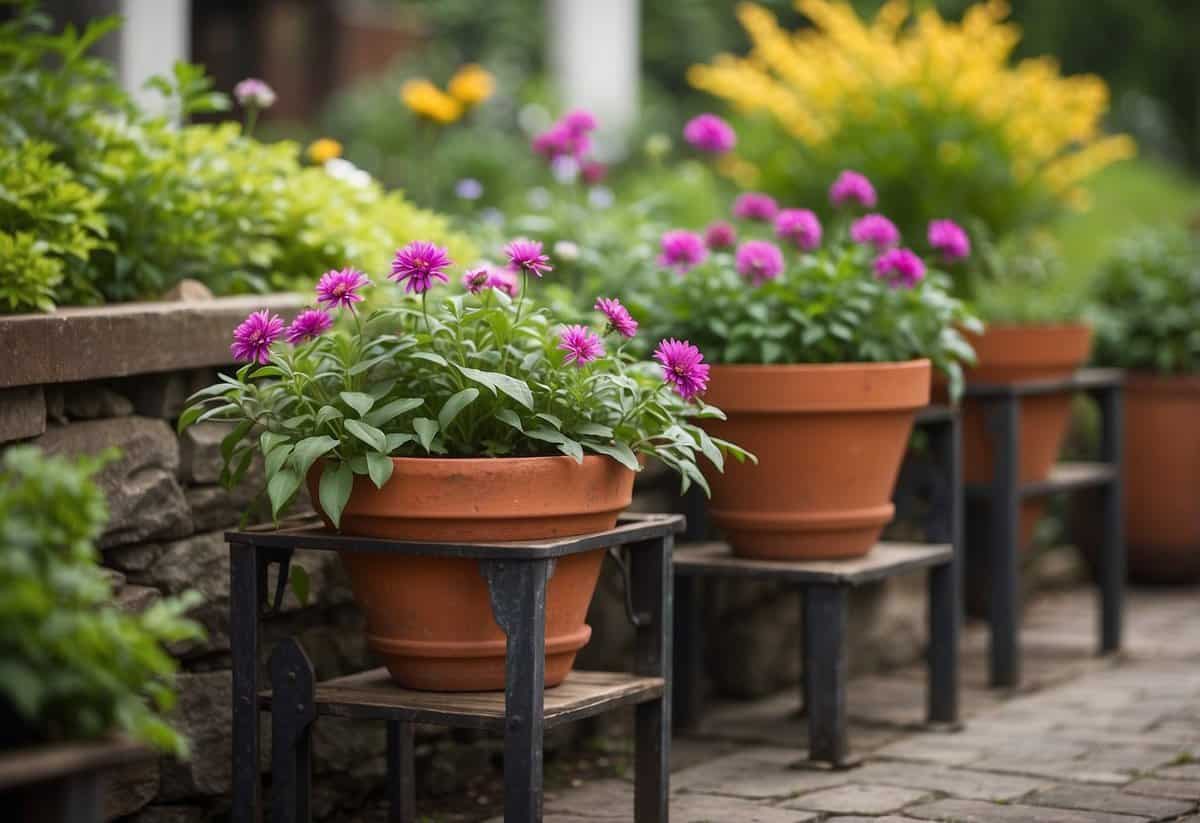
Rustic iron plant stands can add timeless charm to your garden. They are both durable and beautiful, making them perfect for outdoor spaces.
When choosing a liner for your iron plant stand, consider both material and color. A typical coir liner is a good option.
Grouping multiple plants on a stand can create an eye-catching display. Place various sizes and colors together for a vibrant look.
Iron plant stands also blend well with other rustic elements like wooden benches or concrete planters. Try pairing them for a cohesive style.
8) Stylish Concrete Pots

Concrete planters are both durable and stylish. These planters can withstand harsh weather and still look good in your garden.
You can make your own concrete pots by mixing concrete and using molds. Add a bit of personality by painting or staining the concrete.
To ensure proper drainage, drill holes in the bottom. This will help keep your plants healthy.
9) Glass Terrariums

Glass terrariums can add a unique charm to your garden. These small, enclosed gardens are perfect for creating eye-catching displays.
You can use containers of different shapes and sizes. You might choose a fishbowl, a glass jar, or even a hanging glass orb. Each type adds its own special touch.
Consider using air plants in your terrarium. They don’t need soil and are easy to care for. You can also try creating a miniature blue lagoon with colorful stones and tiny plants.
10) Whimsical Fairy Garden Planters
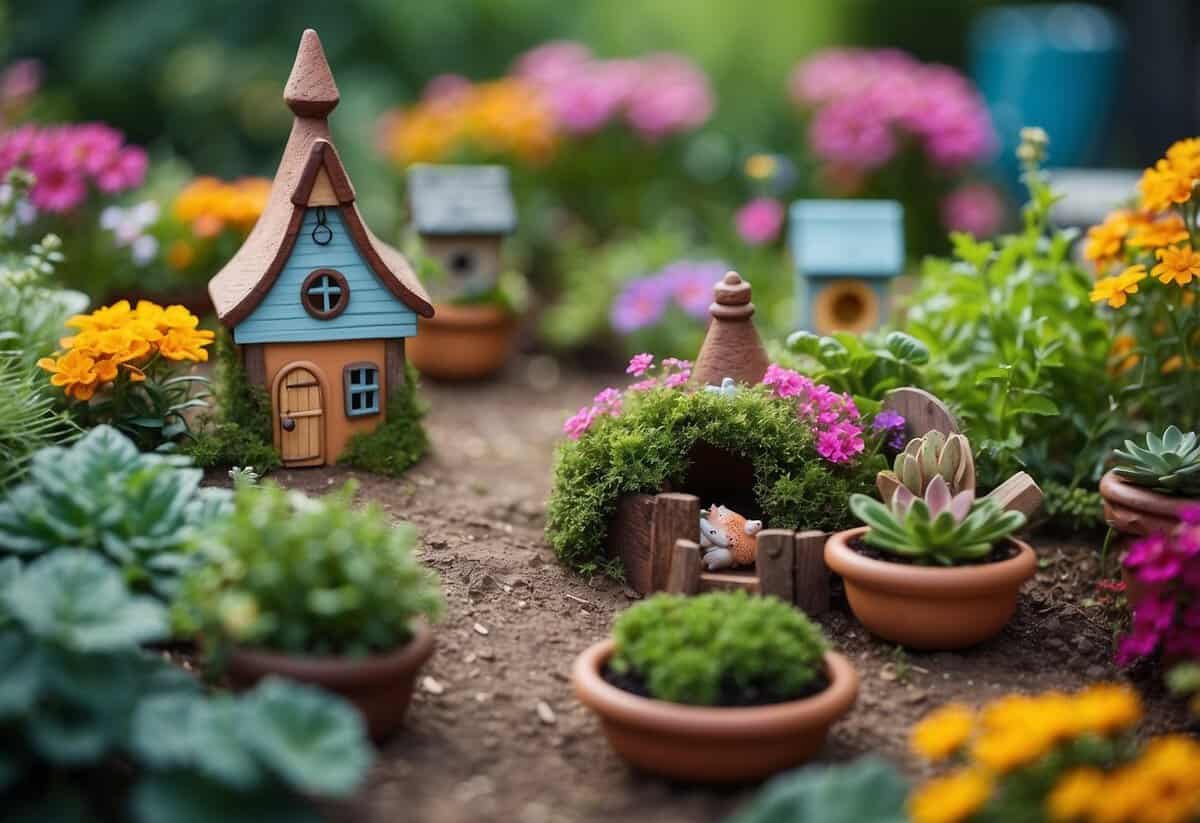
Brighten up your garden with whimsical fairy garden planters. Start by using a container with good drainage. Add pebbles or small stones at the bottom to help with water flow.
Place mini fairy houses in the center as a focal point. Surround them with tiny plants and flowers. Think of adding real or faux plants to match your theme.
Get creative by using upcycled household items like teacups or old boots as planters. Add miniature accessories like tiny benches or fairy figurines. This adds charm and magic to your garden space.
Selecting The Right Planters

Choosing the right planters for your garden involves selecting the right materials, ensuring the correct size, and considering proper drainage. These factors will help your plants grow healthy and strong.
Choosing Materials
When deciding on planter materials, think about the look you want and the durability of the materials. Terracotta planters are classic and allow roots to breathe, though they can break easily. Ceramic planters come in many colors and designs, adding a decorative touch to your garden. They can be heavy and may crack in freezing temperatures.
Resin and fiberglass planters are lightweight, weather-resistant, and available in many styles. These are perfect if you want something easy to move around. Metal planters, such as those made from steel or aluminum, are sleek and modern but can get very hot in the sun, possibly harming your plants.
Finding The Perfect Size
Planter size is crucial for plant health. Small pots are great for herbs or small flowers, while larger planters are better for shrubs or trees. Ensure the planter is big enough for the plant’s roots to grow. If the pot is too small, the plant may become root-bound and not thrive.
Measure the space where you plan to place the planter to make sure it fits well without overcrowding your garden. If you plan to move the planter often, opt for medium-sized ones that are easier to handle. Grouping various sizes can create a dynamic and layered look in your garden.
Considering Drainage
Proper drainage in planters is essential to prevent waterlogging, which can lead to root rot. Look for planters with drainage holes at the bottom. If the planter doesn’t have holes, you can often drill them yourself.
To improve drainage, consider placing a layer of small stones or gravel at the bottom of the planter. This step ensures excess water can escape and keeps the plant roots healthy. Using a saucer under the planter can help catch excess water, but remember to empty it regularly to avoid water buildup.
Selecting the right planters enhances both the beauty and the health of your plants, transforming your garden into a tranquil retreat.
Design Ideas With Planters

Using planters can add charm and creativity to your garden. Whether it’s adding color or creating themed spaces, planters offer a wide range of possibilities.
Creating Visual Interest
Planters are perfect for adding visual interest to your garden. Mix and match different shapes, sizes, and colors of containers to create a dynamic look. For example, using tall, narrow planters alongside shorter, wider ones can create a layered effect.
Materials matter too. Clay pots offer a rustic feel, while metal containers give a modern touch. You can even repurpose items like old buckets or wooden crates as planters for a unique twist.
Plants play a crucial role. Combine tall plants like ornamental grasses with trailing vines to make your planters stand out. For instance, coleus and impatiens work well together, providing both height and color.
Arrangements should not be overlooked. Grouping several planters together in odd numbers, like three or five, can make a more compelling visual impact. Placing them at varying heights, such as on steps or plant stands, can add depth and dimension to your garden.
Themed Gardens
Themed gardens can make your outdoor space more cohesive and exciting. Start by choosing a specific theme, like a herb garden, a tropical oasis, or a pollinator-friendly space.
Herb gardens can be both beautiful and functional. Use planters filled with basil, rosemary, and thyme. Place them near your kitchen for easy access, and choose pots that complement your outdoor decor.
Tropical gardens need vibrant colors and lush foliage. Consider using bold planters and filling them with exotic plants like hibiscus, ferns, and crotons. This setup can transport you to a tropical paradise every time you step outside.
Pollinator gardens attract bees, butterflies, and birds. Select bright, nectar-rich flowers like zinnias, rudbeckias, and lavenders. Arrange these in eye-catching planters to draw attention to your buzzing visitors and add a splash of color to your garden.
By using these design ideas, you can transform your garden with planters into a colorful and inviting space, creating an atmosphere that reflects your personal style and interests.
Maintaining Your Planters

Keeping your planters in top shape involves proper watering techniques, feeding your plants the right nutrients, and adjusting care based on the season. These practices ensure your plants stay healthy and your garden looks beautiful year-round.
Watering Techniques
Watering is crucial for planter health. Make sure your planters have drainage holes to prevent waterlogging. Water deeply but infrequently to encourage strong root growth. Check soil moisture by sticking your finger about an inch into the soil. If it feels dry, it’s time to water. During hot weather, water more frequently to prevent plants from drying out.
Feeding Your Plants
Feeding your plants is just as important as watering them. Use a balanced, water-soluble fertilizer every two weeks. Dilute the fertilizer to half-strength to avoid burning the plants. Look for signs of nutrient deficiencies, such as yellowing leaves, and address them promptly. Remove dead leaves and flowers regularly to keep the planter tidy and free from disease.
Seasonal Care
Different seasons require different care strategies. In spring and summer, your plants will likely need more water and nutrients due to the growing season. In fall, cut back on watering and start preparing your plants for the colder months. Move sensitive plants indoors if you live in a colder area. Mulch your outdoor planters to provide extra insulation during winter. Make sure to prune your plants to maintain their shape and encourage new growth.







